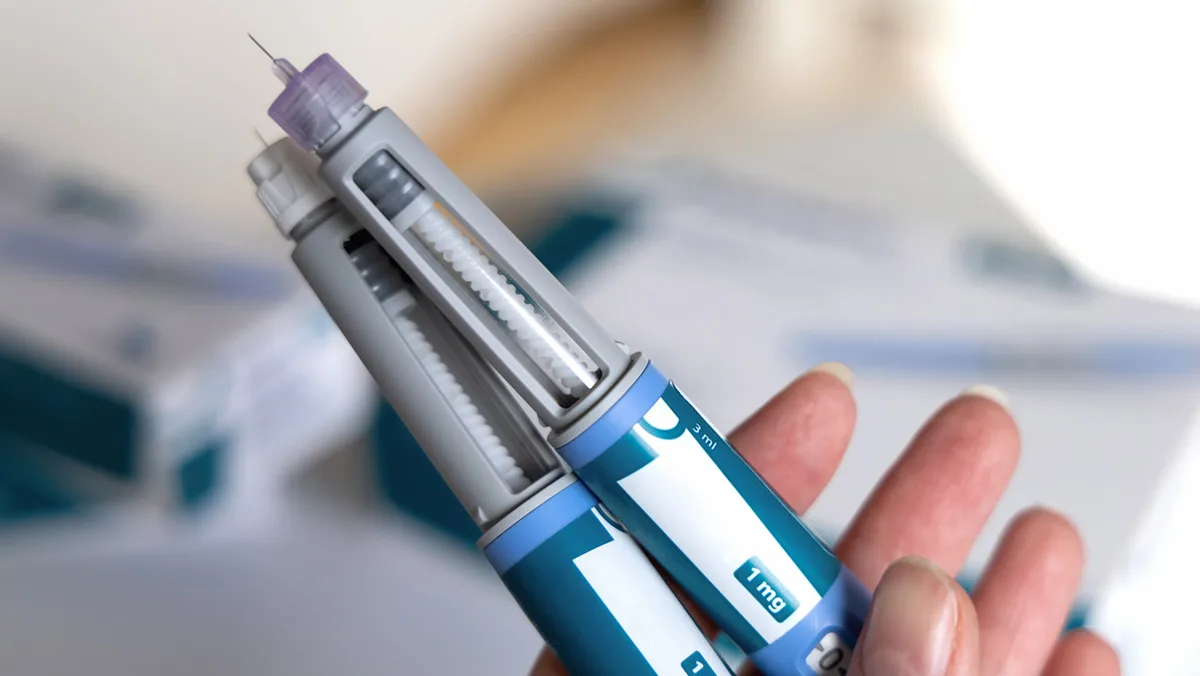
Overview
Big drugmakers and direct-to-consumer clinics are expanding obesity care with new GLP-1s, cheaper self-pay options and new therapies that may transform this rapidly evolving market.
The red-hot market for obesity medications is entering a fierce new competitive phase, after the FDA declared last week that the years-long shortage of certain GLP-1 drugs — injectables like semaglutide and tirzepatide — is over. Drug manufacturers quickly moved to make these medicines available to patients directly at lower prices.
Eli Lilly, the manufacturer Zepbound (tirzepatide) kicked off the trend by creating the Zepbound Self Pay Journey Program and lowering the price of certain vial doses to $499 per month. Novo Nordisk quickly followed with its new NovoCare Pharmacy program. The company said it is providing all doses of FDA-approved Wegovy (semaglutide) for a flat rate of $499 per month to cash-paying patients.
"Every major medical organization and establishment recognizes obesity as a chronic disease, yet insurance and federal programs do not systematically cover people living with obesity for medical care — this needs to change," said Patrik Jonsson, executive vice president and president of Lilly Cardiometabolic Health and Lilly USA, in a news release.
FDA Announcement Draws Lawsuits From Compounders
The FDA’s announcement quickly drew lawsuits by organizations representing businesses that benefitted from the shortage – compounding pharmacies and outsourcing facilities – that were allowed to make and sell generic versions of the weight loss medications while the FDA-approved drugs were in short supply.
The Outsourcing Facilities Association (OFA) and a Texas-based compounding pharmacy allege that the agency’s move to remove semaglutide from the official shortage list was “arbitrary and capricious,” potentially leaving millions of patients unable to access treatment.
The organizations sued the FDA, claiming that drugmakers alone cannot keep pace with nationwide needs and that the FDA’s abrupt “delisting” blocks outsourcing facilities from providing compounded versions. Their complaint also alleges that the FDA skirted normal rulemaking procedures — such as the chance for notice-and-comment — when it declared the shortage resolved. While the FDA reasoned it had enough data to determine the supply was adequate, the OFA points to the manufacturer’s own SEC filings and other reports suggesting lingering supply gaps.
An earlier and similar lawsuit by the organizations against the FDA for its announcement that the tirzepatide shortage ended in October, was resolved this week when Judge Mark Pittman of the Northern District of Texas declined to stop the FDA from declaring an end to the shortage, according to reporting in The Hlll.
Several companies that have been allowed to make and sell generic versions of semaglutide and tirzepatide during the shortage are now trying to figure out a path forward.
Investors punished hims & hers, a telehealth company that has been selling compounded semaglutide, with shares losing half their value this year. The stock peaked at $68.74 on February 19, days before the FDA announcement, and closed at $34.39 on March 6. Hims & Hers CEO Andrew Dunn addressed the news on X.com (Twitter) with a March 2 post, saying that customers are going to face disruptions in their services over the next few months.
“For customers currently on a commercially available dose of compounded semaglutide your medication will no longer be available through Hims & Hers after mid-May,” Dunn wrote. “Once these doses are no longer available on the Hims & Hers platform, we will cancel remaining customer subscriptions and provide a refund for unused fills.”
Meanwhile, Hims & Hers competitor Ro, a direct-to-patients healthcare company, decided to team up with Eli Lily and offer Zepbound through Lily’s self-pay program. Ro made the announcement in December, noting in their news release the ancillary services they offer for weight loss, including access to physicians, coaching, labs and side-effect monitoring.
The Alliance for Pharmacy Compounding, an industry trade association representing more than 600 compounding businesses, questioned whether shortage has really been resolved, but welcomed the 60- and 90-day transition period granted by the FDA.
“All we can do now is watch what happens as patients hear this news and their providers and pharmacists work to get them a new prescription for the FDA-approved drug,” said Scott Brunner, CEO of the Alliance, in a Feb. 21 statement. “There’s likely to be some sticker shock for many, and whether they’ll be able to continue to afford the therapy remains to be seen.”
The cost issue has been a critical one for many patients. Cure, the healthcare innovation ecosystem headquartered in New York City, conducted a patient survey and found 31 percent of people taking GLP-1s abandon treatment due to cost. In a separate survey of specialty physicians' off-label prescribing practices, Cure found the main challenge in getting medications to patients was insurance coverage issues – an issue for 89 percent of physicians.
Investors Hunting For New and Differentiated Weight Loss Therapies
While compounding businesses are sorting out what to do, investors are hunting for new and differentiated treatments for weight loss. According to a February briefing by analysts at Jefferies, more than 100 investigational obesity drugs are in development, many of which aim to emulate or improve upon GLP-1 pathways.
A handful of those in earlier stages are small molecule drugs that might shift care from weekly injections to oral medications, further changing how patients manage obesity.
Jeffries estimates that more than 35 million people in the U.S. will be on GLP-1 medications for obesity and diabetes by 2032, with the market potentially peaking at $120 billion. While 80 percent of current sales are split between Eli Lilly and Novo Nordisk, “new entrants coming could capture 20 percent of the market.”
Future drugs may grow the market by improving upon existing efficacy – either through greater potency or new targets; improving tolerability, potentially by adding other drugs to GLP-1s; or improving convenience, either with oral dosing or auto-injecting pens.
“There are plenty of private Phase II/III obesity companies out there with injectable and oral drugs with various mechanisms,” the firm wrote in a March 5th note.








